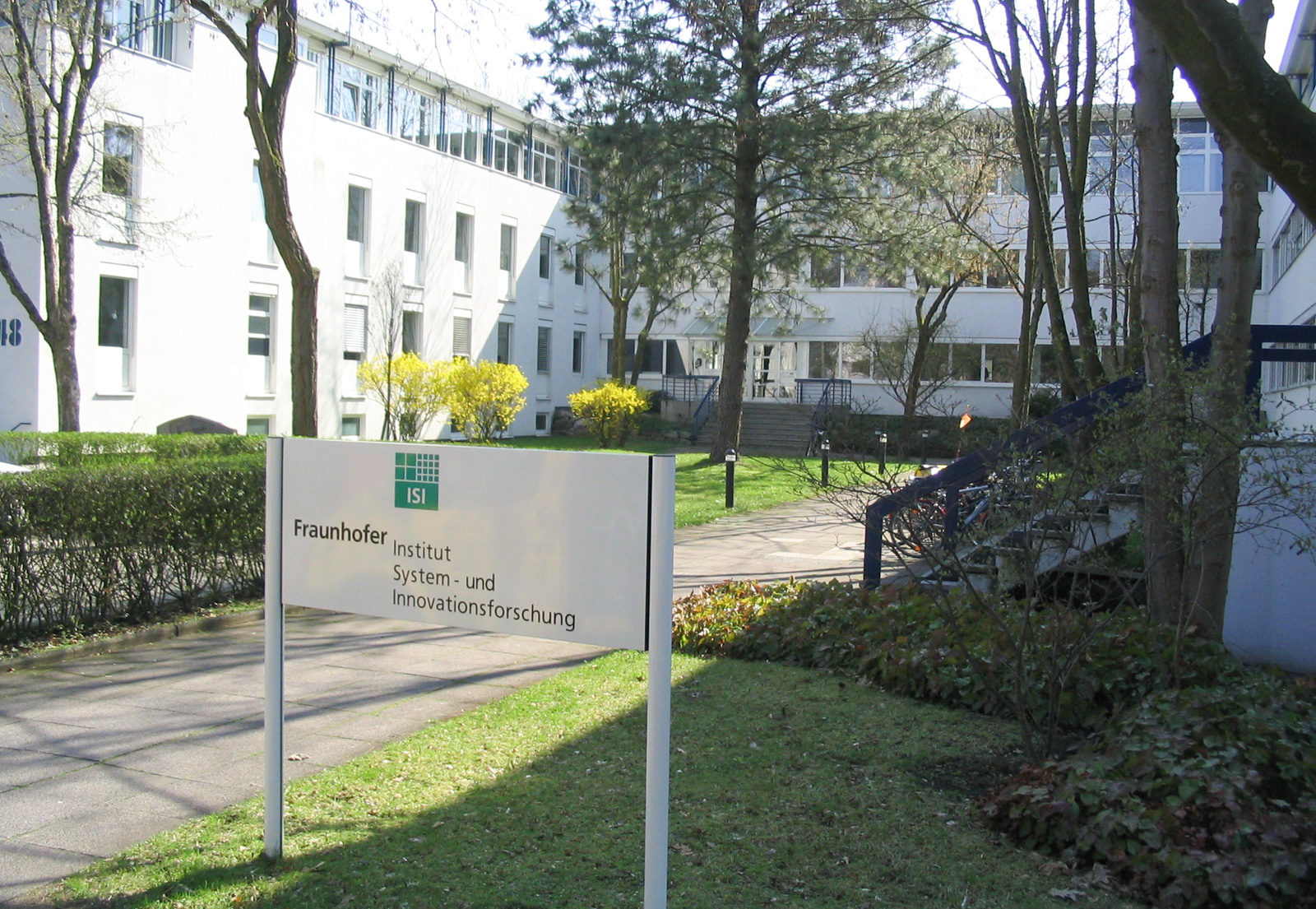Clea Wurster: Decentralization of funding could improve America’s research infrastructure

The Fraunhofer Institute for Systems and Innovation Research ISI is an independent research institute in Germany. Research in Germany takes a more decentralized approach that encourages the creation of more diverse research institutions to conduct studies.
(Public Domain photo by Müller)
By Clea Wurster
Sept. 9, 2018 9:47 p.m.
Bruins have a lot of material for bragging rights. And a big one: Our professors might be spending their days researching cures for cancer.
It isn’t just that we get to interact with experts – we also get to conduct research alongside them, adding countless bullet points to our resumes. But when it comes to office hours and the quality of our education, we can probably do without UCLA professors’ research obsession.
American universities rely on many different sources for funding, but they take on the largest cost of performing academic or scientific research. The total cost of university-performed research and development has risen above $55 billion per year, and universities contribute about $12 billion to this endeavor themselves – about 21 percent of the expenditures.
As Bruins, we’ve experienced the disadvantages of having busy, overworked professors: They devote less time to their students and more time to their personal projects. It might also be the case that professors, and researchers in general, are tied down to a limited number of institutions and research models, simply because universities attract the most investment. Nonuniversity research institutions must rely more heavily on private funding, as about 40 percent of the federal government’s spending on research is awarded to universities. This affects the results in some instances, as corporations and their interests can skew the direction and intention of the research. But it also affects the scope of the projects that can be pursued.
Decentralizing the country’s system for funding research might seem like an unrealistic daydream of students who miss out on valuable classroom time with their professors. But it’s actually a feasible possibility – something the European counterparts already do.
Take Germany for example. For a country that leads the world in governmental spending on research and development, universities make up a surprisingly small percentage of the lucky recipients of all this money.
Germany’s government funds over 1,000 nonuniversity research institutes, but only 240 public higher-education institutions. German governments, both federal and state, contribute about 30 percent of total spending on research and development. Although the U.S. government contributes about 44 percent of the country’s basic research spending, this number has been steadily decreasing since its peak during World War II.
And there are many advantages to a decentralized research approach.
Under the German R & D model, many publicly funded institutions share the burden of performing the research. Several different types of institutions receive federal and state funding, though many are supplemented by industry-funded and industry-driven research. According to Germany’s Federal Ministry of Education and Research, 12 different types of institutions carry out research within the country, including higher-education institutions, private and public scientific organizations, academies and Länder – or German state – institutions.
While German universities do account for a great deal of the research performed in the country, the nation’s research landscape is far more diverse. In 2015, universities were only responsible for 17 percent of Germany’s total R & D expenditure, while 14 percent came from the public sector.
What might come as a surprise is the capacity for institutions outside of universities to generate worthwhile research. We like to think American universities are the only groups capable of groundbreaking developments, but this is the result of a limited vantage point.
But there’s a lot to gain from escaping the high walls of the traditional university. For instance, without the channels of bureaucracy that plague large universities like application processes, funding allocations and short-sightedness when it comes to the potential results of research, research-performing units might be better able to put money in the right places, approach questions from different angles or include researchers from a variety of backgrounds who might not be able to participate in the traditional university setting. Experts who might not be willing to commit to a university might be more welcome at other institutions.
This decentralization allows for better cooperation between institutions and thus a diversity of research institutions: About 12.5 billion euros put toward research annually comes from publicly funded, nonuniversity institutions.
And by displacing research-performing responsibilities to a broader share of publicly funded organizations, Germany encourages and affirms interdisciplinary approaches that are less focused on supporting private companies and give academics a broader range of job opportunities.
Researchers outside the university setting are encouraged to seek interdisciplinary pathways for their research, by piggybacking on and incorporating research from other academic fields. By diffusing the research administration across university and nonuniversity units, institutions can more easily open up positions that are societally, technologically or politically relevant.
Sure, it’s not just funding that stands in the way of the U.S. pursuing a different research paradigm, it’s also the fact that the various groups do not start on an even playing field. Decentralizing the American R & D approach might be an immense undertaking, but that shouldn’t stop us from considering it. It might even just be a question of encouraging more interaction and cooperation between research universities like UCLA and their peers, enabling these groups to share costs and encouraging movement of experts between research institutions so their skills can be put to better use.
We may love the bragging rights that come along with attending one of the U.S.’ best research universities. But forfeiting this monopoly on bragging rights might actually be the way to improve academic research – and the relations between Bruins and their professors.


